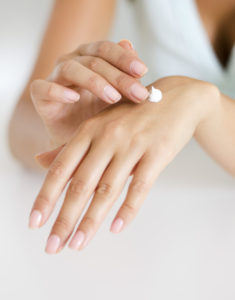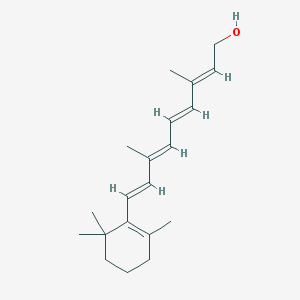This week, we’re going to continue with our theme of boosting collagen production without breaking the bank.
(If you missed it, I’ve previously covered why collagen in skincare and supplements doesn’t work and the collagen-boosting benefits of topical vitamin C.)
Today’s post is going to be all about vitamin A, aka retinol or retinoids.

Retinol vs. Retinoids
These are both effective forms of vitamin A. The main differences between the two are in strength and speed.
Retinol
Retinol is the name for the whole vitamin A molecule. It can be found naturally in our bodies as well as in over-the-counter skincare. Typically, OTC products will have between 0.05 to one percent concentrations of retinol.

When you apply retinol to you skin, it is slowly converted into retinoic acid, which is the compound responsible for the collagen production and anti-aging magic we’re looking for. The key word here is “slow,” however. With retinol-based products, it can take up to six months of consistent usage before you see any measurable difference in your skin.
With OTC retinol products, you should be sure to shop carefully. Formulation and packaging DO matter!
For Western products, it’s important to look for names like retinol, retinyl palmitate or vitamin A in the first five or so ingredients because this usually indicates that it’s present in an effective concentration. If it’s much lower down on the list than that, you may not be getting enough for it to make a difference.
You should also make sure that the product comes in an airtight, opaque dispenser, preferably a pump bottle. Vitamin A is pretty sensitive to degradation from sunlight, so keeping it sealed well in a dark container is the best way to make sure it stays effective.
Retinoids
“Retinoid” is the general term for all of the vitamin A derivatives available. In most places (as far as I know), these require a prescription because they’re much more potent than retinols.
All of the following are considered retinoids:
- Tretinoin (like Retin-A)
- Isotretinoin (like Isotrex or Isotrexin)
- Adapalene (like Differin or Epiduo)
- Tazarotene
That isn’t a comprehensive list by any means, it’s just a few of the most common ones you’ll run into.
These generally work faster, but can also cause more irritation when you first start using them. It’s common for all skin types to experience some redness, dryness, flaking or itching until you get adjusted to the dosage.
How Retinol Helps Boost Collagen
Let’s move on to what you came here for: how slathering vitamin A on your face can lead to more collagen.
As I mentioned earlier, when retinol is applied to the skin, your body converts it into retinoic acid, which is the form of vitamin A that does all of the work. This is what’s responsible for stimulating collagen production as well as helping out with things like hydration, cell turnover and other anti-aging prevention.
1. Repairing Photoaging
Vitamin A’s most helpful attribute is its ability to prevent and repair photoaging, which is damage caused to your skin by sunlight. One major sign of photoaging, other than tanning, is the breakdown of collagen under your skin.

When your skin is exposed to UV rays, the cells become damaged and unable to communicate properly. This is a big part of what leads to the breakdown of collagen and elastin. Retinol is able to attach itself to those damaged cells and communicate normally, which helps them act like healthy cells again and, in turn, helps your skin retain more collagen.
If you’re diligent with sun protection while using retinol, you’ll have much younger-looking skin because you’ll retain old collagen and preserve new collagen much longer.
2. Increasing Cell Turnover
Not only can retinol help damaged cells communicate, but it can also increase the rate at which old, dead skin cells slough off and new, fresh skin cells appear.
Over time, this faster, more regulated cycle of shedding old cells and creating new ones creates a boost in collagen. This can reduce the appearance of fine lines and wrinkles, and it gives your skin an overall healthier, bouncier and younger look.

Let’s Recap!
- Both retinol and retinoids are safe and effective topical anti-aging products.
- Retinols can be found OTC; retinoids usually require a prescription.
- Formulation and packaging matter when using both products! Both can cause irritation, so proceed carefully.
- Your body converts both retinol and retinoids to retinoic acid, which is the active form of topical vitamin A.
- Retinol acts as a cell communicator to help UV-damaged cells function normally and preserve collagen.
- Retinol also speeds up and regulates cell turnover, which stimulates new collagen production and gives you a fresher look.
One final reminder! You have to be prepared for the long game when you start retinol. This isn’t a magical quick fix, and you will rarely see results quickly. Things are happening, but it normally takes weeks and, in some cases, even months to notice substantial differences in how your skin looks and feels.
And please. Please. If you know yourself and know you probably won’t remember to be meticulous with your sunscreen, skip this treatment. Using retinol without regular sun protection can do more harm than good.